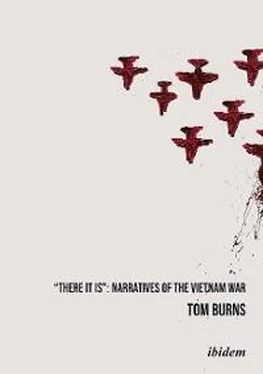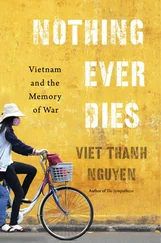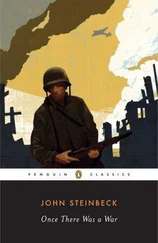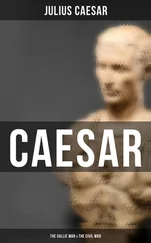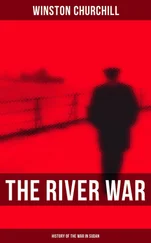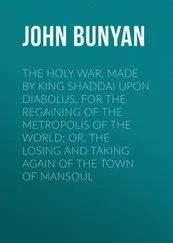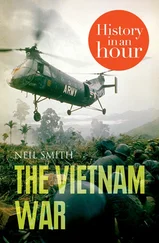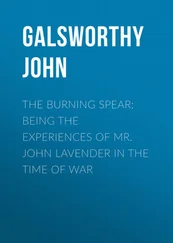Tom Burns - There It Is - Narratives of the Vietnam War
Здесь есть возможность читать онлайн «Tom Burns - There It Is - Narratives of the Vietnam War» — ознакомительный отрывок электронной книги совершенно бесплатно, а после прочтения отрывка купить полную версию. В некоторых случаях можно слушать аудио, скачать через торрент в формате fb2 и присутствует краткое содержание. Жанр: unrecognised, на английском языке. Описание произведения, (предисловие) а так же отзывы посетителей доступны на портале библиотеки ЛибКат.
- Название:There It Is: Narratives of the Vietnam War
- Автор:
- Жанр:
- Год:неизвестен
- ISBN:нет данных
- Рейтинг книги:5 / 5. Голосов: 1
-
Избранное:Добавить в избранное
- Отзывы:
-
Ваша оценка:
- 100
- 1
- 2
- 3
- 4
- 5
There It Is: Narratives of the Vietnam War: краткое содержание, описание и аннотация
Предлагаем к чтению аннотацию, описание, краткое содержание или предисловие (зависит от того, что написал сам автор книги «There It Is: Narratives of the Vietnam War»). Если вы не нашли необходимую информацию о книге — напишите в комментариях, мы постараемся отыскать её.
There It Is: Narratives of the Vietnam War — читать онлайн ознакомительный отрывок
Ниже представлен текст книги, разбитый по страницам. Система сохранения места последней прочитанной страницы, позволяет с удобством читать онлайн бесплатно книгу «There It Is: Narratives of the Vietnam War», без необходимости каждый раз заново искать на чём Вы остановились. Поставьте закладку, и сможете в любой момент перейти на страницу, на которой закончили чтение.
Интервал:
Закладка:
In his “bear any burden in the defense of liberty” 1961 inaugural address, Kennedy reiterated presidential guarantees of the cause, and the speech had considerable influence on the nation’s idealistic youth. The president saw Vietnam as a “test case” of the nation’s determination to maintain its commitments. 23His civilian advisors, drawn from the country’s intellectual and corporate elite, “the best and the brightest” in David Halberstam’s ironic words, scorned the accumulated knowledge and experience of the academic and government experts on Asia, believing in the superiority of their own class and education to make the right decisions.
John Kenneth Galbraith has asserted, however, that this Harvard-educated power elite knew nothing about the world, “ours or theirs,” believing that it was enough to know the “difference between a Communist and an Anti-Communist” without regarding the changing nuances of history and by clinging to the ideology of the Cold War that was still the prevailing line of thinking in US foreign policy in the 1960s. 24The rabid anti-Communist McCarthyism of the early 1950s had not completely died and still had a major influence on the thought and policies of politicians of both parties, particularly the Democrats, who felt especially vulnerable to attacks on their patriotism for being (as the expression went) “soft on Communism.” On the other hand, most Vietnamese perceived the Viet Minh, their leader Ho Chi Minh, and later the NLF, as liberators from a series of foreign oppressors: first, the French, then the Japanese, again the French, and eventually the Americans.
After Kennedy’s assassination in 1963, President Lyndon Johnson would give continuity to his policies by retaining the former administration’s key figures—Dean Rusk as Secretary of State, Robert McNamara as Secretary of Defense, and McGeorge Bundy as National Security Council advisor—men who thought that the expanded global role of the US had increased the importance of holding the line in Indochina. 25If the containment of Communism had worked in Europe, where internationally recognized spheres of influence were established after World War II, it was mistaken to try to extend that policy to Asia, where the specter of Red China sent out more tremors. Besides, holding the line in Southeast Asia was based on the mistaken assumption that Communism—which was not only a political system, but also a set of practices, a creed, and an ideology—could be contained militarily. Even if that were possible without another world war, it would probably have been counter-productive at the time. The threat perceived as embodied in China was not so much military as political and cultural. 26
The implementation of US policy was carried out with the arrival of civilian and military advisory and support personnel in southern Vietnam. The Saigon Military Mission (SMM) was to be led by Colonel Edward G. Landsdale, a notorious figure who will appear as a model for a character in several novels that will be discussed in these pages. The SMM was to enter Vietnam quietly and assist the Vietnamese, not the French, in unconventional warfare, with the French being retained as friendly allies.
The following years saw Ngo Dinh Diem as the USA’s favorite anti-Communist, although his increasingly autocratic rule alienated American leaders, who tried to link US financial and military aid to governmental reforms on his part, which he resented and often ignored. When he and especially his powerful brother, Ngo Dinh Nhu, who were Catholics, began to repress the protests of the Buddhist majority, which led to the self-immolations of Buddhist monks that shocked world opinion, the popularity of the government dropped to an all-time low. Popular discontent focused on Nhu and his outspoken wife, known as Madame Nhu (who notoriously referred to the Buddhist monks’ suicides as “barbecue”). Eventually, the Ngo brothers would be ousted by a coup of conspiring military commanders with the direct connivance of the CIA and its experienced operator Lt. Col. Lucien Conein, a veteran of the Indochina war.
The Pentagon’s secret study shows that “Kennedy knew and approved of plans for the military coup d’état that overthrew President Ngo Dinh Diem in 1963.” 27The Ngo brothers were assassinated only a few weeks before Kennedy himself perished by an assassin’s bullet in Dallas (it is noteworthy that Kennedy had championed the Catholic anti-Communist Diem back in the 1950s, well before he became the US president). The Pentagon study points out that Diem’s ouster presented an excellent opportunity for the US to disengage from South Vietnam and the taint of propping up an oppressive and anti-democratic government, but the effect was that US officials discovered that the war against the NLF had been much worse than had been thought and decided that it therefore ought to do more, not less, for the South Vietnamese government. The Pentagon Papers concludes that “by supporting the anti-Diem coup the US had inadvertently deepened its involvement.” 28
The argument for direct military intervention was based on the alleged aggression of North Vietnam, which continued to be cited as an example of Communist bad faith. US officials always claimed that the National Liberation Front, the so-called Viet Cong, was merely the southern arm of North Vietnam and was controlled by Hanoi, the North Vietnamese capital. In fact, the NLF was founded and sustained as a southern organization of resistance to Diem—a CIA report of December 1964 confirmed the NLF’s indigenous origins at that late date. 29Butterfield, in his chapter on the origins of the insurgency in the Pentagon Papers account, confirms that “the war began largely as a rebellion in the South against the increasingly oppressive and corrupt regime of Ngo Dinh Diem.” 30He goes on to argue that North Vietnam was “concentrated on its internal development.” The cadre members who remained in the south after the division of the country were ordered to engage only in “political struggle.” They evidently believed that they would eventually wrest control of the country through elections or through the collapse of the Diem regime from its own internal weakness. 31
In any case, the Pentagon study makes it clear that the provocation for war initiated with the Americans: “an elaborate program of covert military operations against the state of North Vietnam” began in February 1964.” 32Covert operations included U-2 spy plane reconnaissance, the kidnapping of people for intelligence information, parachuting psyche war and sabotage teams into North Vietnam, commando raids to blow up bridges, and the bombardment of coastal installations by PT boats. 33Bombing raids that began in Laos against North Vietnamese and Pathet Lao (Communist guerrilla) troops were a prelude to the bombing of North Vietnam by the Johnson administration “to bring more military pressure against North Vietnam.” 34The bombing of North Vietnam increased as the NLF rebellion was prosecuted successfully in the South. 35The inability of the post-coup Saigon government under General Khanh to compete politically with Hanoi negated the possibility of a political settlement between the Vietnamese themselves, because it was believed that “it would result in a Communist take-over and the destruction of the American position in South Vietnam. 36What American officials and politicians insisted was the North Vietnamese “aggression” that prevented a peaceful settlement must be seen in this context. 37
The pretext for the hot war came with the so-called Gulf of Tonkin incident (August 1964), in which two US Navy destroyers in North Vietnamese waters, on a spying mission for the NSA, were said to have been attacked by North Vietnamese torpedo boats. A top secret analysis of the incident completed in 2000, however, “concluded that the second attack, the one actually used to justify the war, never took place.” Instead, NSA officials withheld 90% of the information on the incident from the Johnson administration officials, except for what “supported the claim that the communists had attacked the two destroyers.” The alleged attack, based on this misinformation, led to the Tonkin Gulf Resolution, which justified President Lyndon B. Johnson’s war on North Vietnam without a formal declaration of war from Congress, as required by the US Constitution. 38
Читать дальшеИнтервал:
Закладка:
Похожие книги на «There It Is: Narratives of the Vietnam War»
Представляем Вашему вниманию похожие книги на «There It Is: Narratives of the Vietnam War» списком для выбора. Мы отобрали схожую по названию и смыслу литературу в надежде предоставить читателям больше вариантов отыскать новые, интересные, ещё непрочитанные произведения.
Обсуждение, отзывы о книге «There It Is: Narratives of the Vietnam War» и просто собственные мнения читателей. Оставьте ваши комментарии, напишите, что Вы думаете о произведении, его смысле или главных героях. Укажите что конкретно понравилось, а что нет, и почему Вы так считаете.
